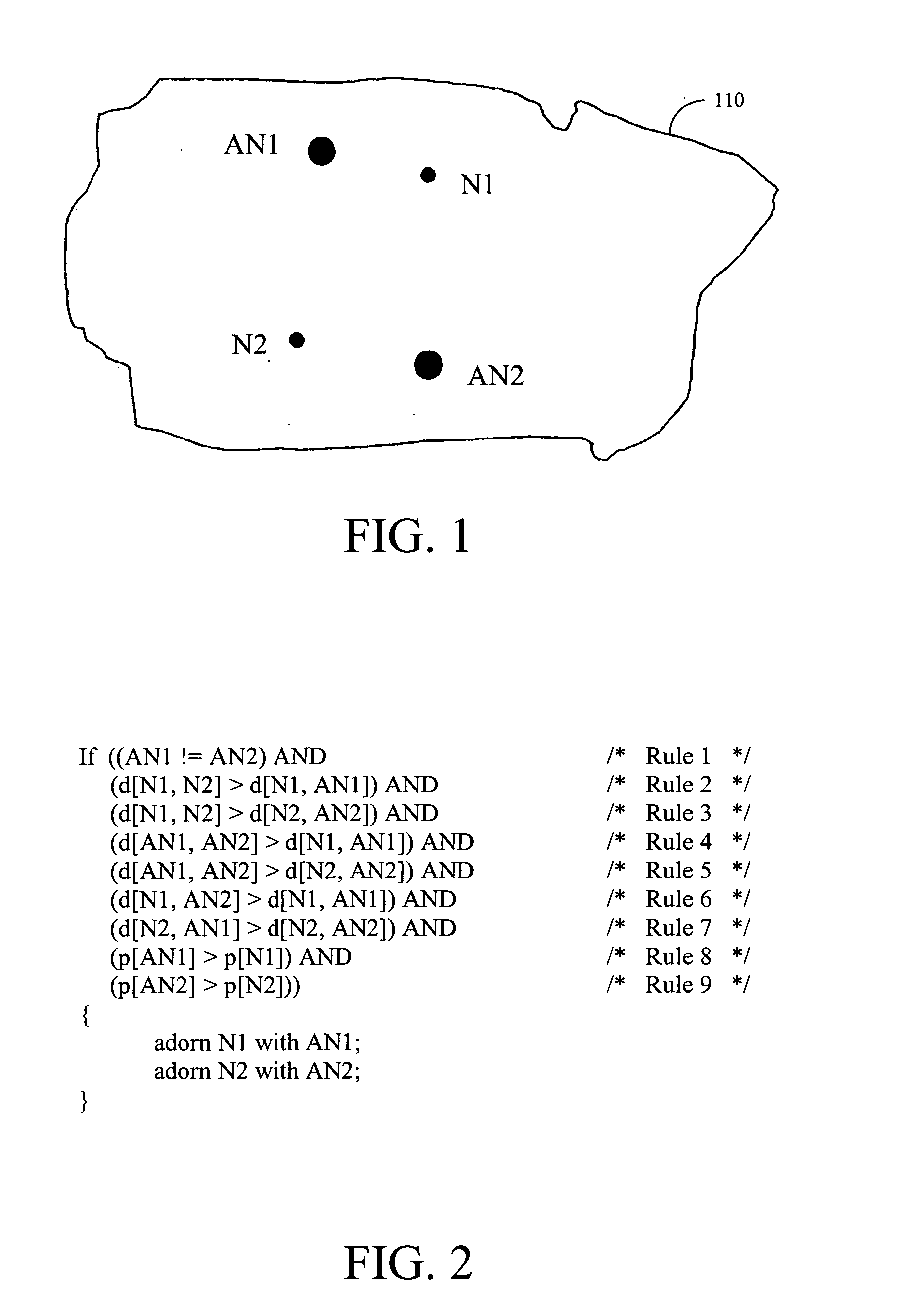Method for differentiating duplicate or similarly named disjoint localities within a state or other principal geographic unit of interest
a geographic unit or state, duplicate or similarly named technology, applied in the field of map databases, can solve the problems of inability to effectively condense similar names for a locality into a single entry, and the approach is not particularly useful or robust in identifying similarly named yet disjoint localities for navigation applications
- Summary
- Abstract
- Description
- Claims
- Application Information
AI Technical Summary
Benefits of technology
Problems solved by technology
Method used
Image
Examples
Embodiment Construction
[0020]FIG. 1 illustrates an example of two duplicate yet disjoint localities, N1 and N2, in a fictitious principal geographic unit of interest 110, as well as example significant nearby localities, AN1 and AN2, which adorn localities N1 and N2, respectively. The adornment process is provided in more detail in the following discussion of the other figures.
[0021]FIG. 2 illustrates an embodiment of the rules involved for selecting adornments AN1 and AN2 for a pair of duplicate localities N1 and N2, respectively, within a geographic unit of interest. Many algorithms for determining the adornments for N1 and N2 are possible. Both AN1 and AN2 are located in the same geographic unit of interest as N1 and N2. Embodiments of the invention adorn localities with more helpful names of nearby big cities or other significant localities. As shown in FIG. 2, the function d[ ] returns the distance between two localities and the function p[ ] determines the significance of a locality name. According...
PUM
 Login to View More
Login to View More Abstract
Description
Claims
Application Information
 Login to View More
Login to View More - R&D
- Intellectual Property
- Life Sciences
- Materials
- Tech Scout
- Unparalleled Data Quality
- Higher Quality Content
- 60% Fewer Hallucinations
Browse by: Latest US Patents, China's latest patents, Technical Efficacy Thesaurus, Application Domain, Technology Topic, Popular Technical Reports.
© 2025 PatSnap. All rights reserved.Legal|Privacy policy|Modern Slavery Act Transparency Statement|Sitemap|About US| Contact US: help@patsnap.com



